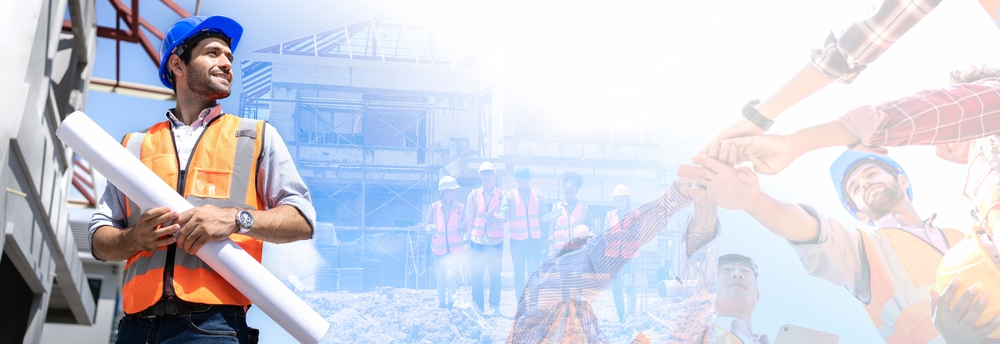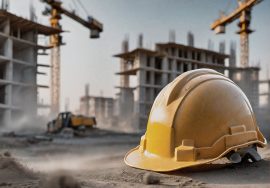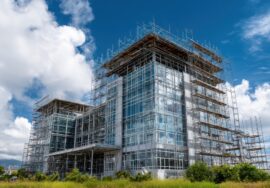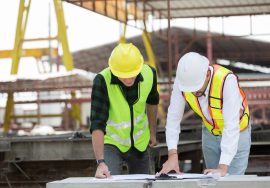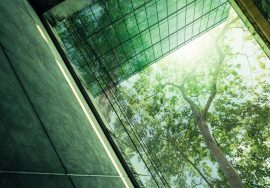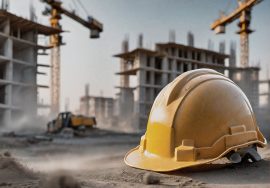LEED-Certified Projects: Building a Sustainable Future
LEED-Certified Projects: Building a Sustainable Future
As climate change and environmental concerns continue to shape industries worldwide, the demand for LEED-certified projects has grown significantly. Leadership in Energy and Environmental Design (LEED) is one of the most recognized green building certification systems globally, setting high standards for energy efficiency, sustainability, and eco-friendly construction.
This blog explores the importance of LEED certification, its benefits, key features, and how it is transforming the construction landscape.
What is LEED Certification?
LEED (Leadership in Energy and Environmental Design) is a globally recognized rating system developed by the U.S. Green Building Council (USGBC). It provides a framework for designing, constructing, and operating buildings that prioritize sustainability, energy efficiency, and environmental responsibility.
Buildings can achieve LEED certification at different levels based on the number of points earned in categories like water efficiency, energy use, materials, and indoor environmental quality. The certification levels include:
- Certified (40-49 points)
- Silver (50-59 points)
- Gold (60-79 points)
- Platinum (80+ points)
Why are LEED-Certified Projects Important?
With increasing concerns about climate change, urbanization, and resource depletion, LEED-certified projects play a crucial role in reducing the environmental impact of buildings. These projects promote:
- Energy efficiency – Reducing energy consumption through smart design and technology.
- Water conservation – Implementing systems to minimize water waste.
- Lower carbon footprint – Using sustainable materials and renewable energy sources.
- Healthier living spaces – Enhancing indoor air quality and comfort for occupants.
Key Features of LEED-Certified Projects
1. Energy Efficiency
LEED-certified buildings use energy-efficient systems such as LED lighting, smart HVAC systems, and renewable energy sources like solar panels to reduce overall energy consumption. These measures lower operating costs and contribute to a greener environment.
2. Water Conservation
Efficient plumbing fixtures, rainwater harvesting, and wastewater recycling systems help minimize water wastage in LEED-certified projects. Many projects integrate smart irrigation systems that adjust watering schedules based on weather conditions.
3. Sustainable Materials
LEED-certified buildings prioritize materials that are:
- Recycled or locally sourced to reduce transportation emissions.
- Low in volatile organic compounds (VOCs) to improve indoor air quality.
- Sustainably harvested, such as bamboo flooring or FSC-certified wood.
4. Smart Waste Management
These projects focus on reducing construction and operational waste through recycling programs, composting, and efficient disposal methods to minimize landfill impact.
5. Indoor Environmental Quality
LEED promotes natural lighting, proper ventilation, and non-toxic materials to create a healthier indoor environment for occupants. Green roofs and living walls also contribute to air purification.
Benefits of LEED-Certified Projects
1. Reduced Operating Costs
Energy-efficient buildings consume 25%-30% less energy, leading to significant savings on electricity and water bills over time. Businesses and homeowners benefit from lower maintenance costs due to the durability of sustainable materials.
2. Higher Property Value
LEED certification increases a property’s marketability, as buyers and tenants prefer eco-friendly spaces with lower energy costs and healthier environments. LEED buildings often command higher rental rates and resale values.
3. Environmental Benefits
By reducing carbon emissions, conserving water, and minimizing waste, LEED-certified projects help mitigate the effects of climate change. These buildings contribute to cleaner air, water, and a healthier planet.
4. Improved Productivity and Well-Being
Studies show that occupants of LEED-certified buildings experience better mental and physical health, increased productivity, and higher satisfaction due to enhanced indoor air quality and optimized natural lighting.
5. Eligibility for Incentives
Several governments offer tax benefits, grants, and fast-track approvals for LEED-certified projects, making them an attractive investment for developers and businesses.

LEED Certification in India
India has witnessed rapid growth in LEED-certified buildings, driven by government policies, corporate sustainability initiatives, and increasing awareness of green construction.
Prominent LEED-certified projects in India include:
- Infosys Bangalore – A Platinum LEED-certified campus emphasizing energy efficiency.
- CII-Sohrabji Green Business Centre, Hyderabad – One of India’s first Platinum-rated LEED buildings.
- ITC Green Centre, Gurgaon – An iconic green building demonstrating sustainable corporate infrastructure.
For businesses and developers interested in sustainable projects, consulting experts in LEED certification and eco-friendly construction is essential. Learn more about sustainable building solutions by contacting us.
Conclusion
LEED-certified projects are shaping the future of construction by promoting energy efficiency, sustainability, and healthier living environments. Whether for commercial, residential, or industrial buildings, LEED certification provides long-term environmental and economic benefits.
As cities move toward net-zero goals and carbon-neutral development, adopting LEED standards will play a crucial role in building a sustainable future.
Construction Industry in India
- One of India’s largest construction and engineering companies, Campus Construction Cost Optimization provides services including project management, cost control, and engineering consultancy. For detailed information on their offerings, visit. Construction Industry in India
Read more related articles to enhance your knowledge and make informed decisions
10 Essential Steps in the Building Construction Process
How to Choose the Right Materials for Your Construction Project

